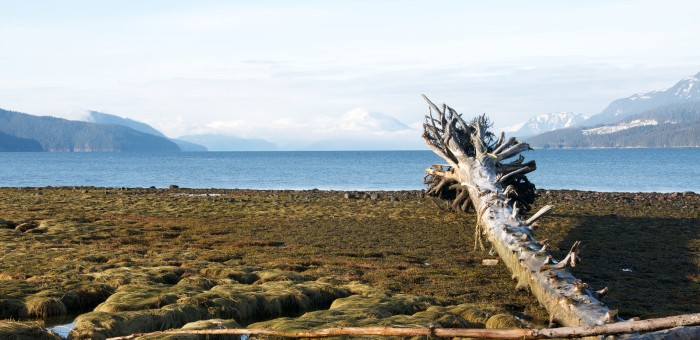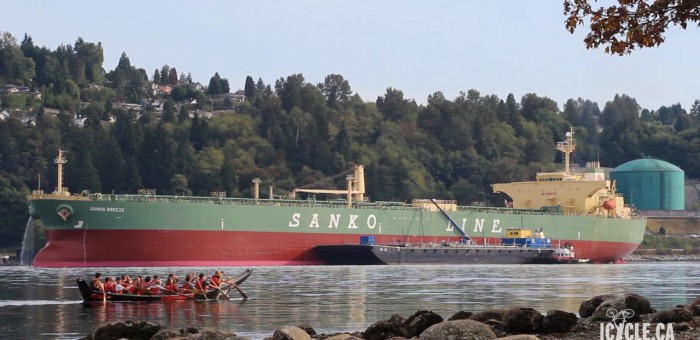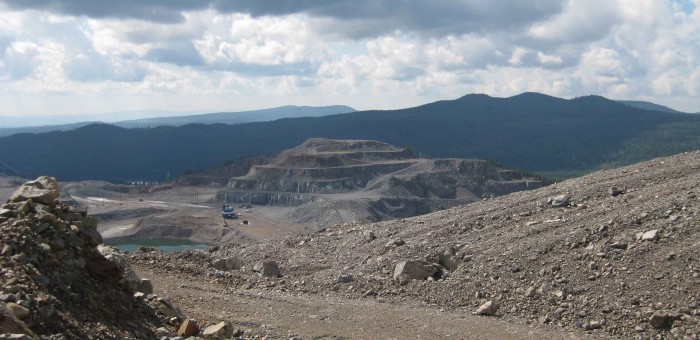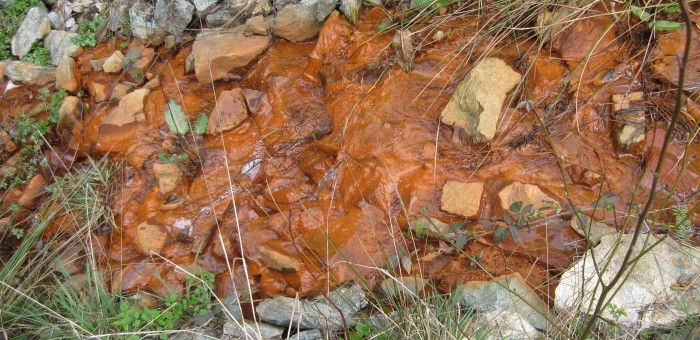Environment
The staggering importance of a little fish you probably haven’t heard of
If you look at the base of the B.C. marine ecosystem, you’ll find a funny little fish with a lot of names – eulachon, oulachon, oolichan, hooligan, ooligan, candlefish. This species is critically important to the viability of numerous other species in our coastal waters, but has been quietly plummeting, with stocks down by ~98%. While economical, effective, and simple solutions to environmental crises may be few and far between, scientists in Oregon seem to have found an answer to the plight of the eulachon. The results are preliminary, but promising and word is spreading quickly through the fishing industry. To understand why this innovative research is so exciting and encouraging, we start near the bottom of the marine food chain with an examination of a fish of staggering importance.
Eulachon, a species of smelt that spawn in a limited number of rivers on the West Coast, spend most of their three-year life cycle in the marine environment where, much like herring, they play a pivotal role in sustaining the coastal food chain. As a forage fish, eulachon are a foundational species that feed hundreds of different types of animals. From salmon to marine birds, lingcod to killer whales, sea lions to eagles, nearly every marine animal in BC relies on forage fish as principal aspect of their diet.
 Eulachon returning to spawn in the Columbia River. Photo by Sam Beebe, @sbeebe, CC-BY-2.0
Eulachon returning to spawn in the Columbia River. Photo by Sam Beebe, @sbeebe, CC-BY-2.0
Eulachon are vitally important to First Nations’ culture too; harvests are used for food, social, and ceremonial purposes. Eulachon’s high oil content has made them an incredibly valuable source of nutrients for coastal communities – it also means they’ll burn like a candle if lit on fire, which, logically enough, has earned them the name “candle fish.” For thousands of years, Coastal First Nations rendered eulachons into a grease, the health benefits and longevity of which made it a staple aspect of their diet. It was a coveted commodity traded between communities and carried in cedar boxes across well-trodden “grease trails” – the most famous of which stretches from Bella Coola to Quesnel.
 Audry Duncan from the Haisla Nation setting up eulachon in a smoker. Photo by Sam Beebe, @sbeebe, CC-BY-2.0
Audry Duncan from the Haisla Nation setting up eulachon in a smoker. Photo by Sam Beebe, @sbeebe, CC-BY-2.0
Although there are still a few rivers, such as the Klinaklini and Kingcome that have strong runs, the eulachon population coast-wide in British Columbia is estimated to have declined by 98 per cent.
As a result, the Committee on the Status of Endangered Wildlife in Canada has listed the Fraser River eulachon population as endangered, the Central Pacific Coast population as endangered, and the Nass/Skeena Rivers population as a species of special concern.
Despite their ecological and cultural importance, there are significant knowledge gaps about eulachon’s basic biology, migration routes, and historical spawning patterns. Unlike salmon, which are studied extensively, eulachon have little direct commercial market value (none currently as the fishery is now closed – though at one point there were active eulachon fisheries on the Fraser, Nass, Skeena, Klinaklini, and Kingcome Rivers). Intrinsically and indirectly, of course, they are invaluable and feed countless other market species. Given the constrained level of scientific attention given to eulachon, the Department of Fisheries and Oceans Canada (DFO) says it is difficult to conclusively pin-point the cause of their population crash. Instead, their decline has been linked to a variety of activities, such as the marine transportation of oil, natural gas, and toxic chemicals, estuary alteration, shoreline development, industrial runoff, agricultural pollution, trawl fisheries, and forestry activity.
According to recent egg and larval surveys in the Fraser River, DFO reports eulachon abundance as being at an all-time low. Considering the diversity between localized pressures, however, DFO notes that it is “unlikely that such threats would explain the nearly synchronous coast-wide decline of eulachon that has occurred.”
Though certain threats, it is worth noting, have been more pervasive and persistent. Many believe that the shrimp trawl fishery, for example, is responsible for much of the eulachon collapse.
Eulachon are prone to getting caught in mid-water and bottom nets trawling for other species, like the ones used to harvest shrimp. Virtually every eulachon that hits the deck of a fishing vessel will die, according to DFO’s report, and another 60-70% of the fish who escape through the net will be killed as “collateral damage”.
Monitoring indicates that in‐season eulachon bycatch estimates have decreased over time, dropping from 22,406 pounds in 2001 to 8,818 pounds in 2005, and less than 2,205 pounds since 2006. It is hard not to speculate, however, that the reason fewer eulachon are being caught in shrimp nets is because there are fewer of them around to begin with, as indicated by this DFO graph from 2007.
 Fraser eulachon spawning stock biomass from 1995 to 2007 estimated by egg and larval survey at Fraser sampling locations.
Fraser eulachon spawning stock biomass from 1995 to 2007 estimated by egg and larval survey at Fraser sampling locations.
A population dynamics model conducted by DFO for the Fraser river eulachon run indicated that even a small removal or increased mortality rate (5t of the weakest cycle line) would significantly impair any potential for recovery. “Given the large uncertainty regarding magnitude of threats to the Eulachon,” the report continued, “minimal allowable harm should be permitted at this time, and be reduced below current levels as much as possible.”
DFO also says that “climate change effects may impact both the marine and freshwater habitats.” The exceptionally large and warm expanse of water currently stretching across the North Pacific Ocean is, unfortunately, making this look quite likely. “Right now it’s super warm all the way across the Pacific to Japan,” said Bill Peterson, an oceanographer with NOAA’s Northwest Fisheries Science Center in Newport, Ore. Not since records began has the region of the North Pacific Ocean been so warm for so long, the Northwest Fisheries Science Center reported. “The warm expanse has been characterized by sea surface temperatures as much as three degrees C (about 5.4 degrees F) higher than average, lasting for months, and appears on large- scale temperature maps as a red-orange mass of warm water many hundreds of miles across.”
 Image from Northwest Fisheries Science Center illustrating the expanse of warm water stretching across the Gulf of Alaska and Bering Sea.
Image from Northwest Fisheries Science Center illustrating the expanse of warm water stretching across the Gulf of Alaska and Bering Sea.
The mistreatment of eulachon stocks in B.C. is an environmental and cultural tragedy, to say the least. Forage fish like herring and eulachon form a pillar that holds up the entire coastal ecosystem, yet for decades they have been hastily killed as bycatch and chucked overboard by the tonne, with little consideration for the consequences.
Yet all is not lost. Scientists in Oregon seem to have hit upon an effective and low-cost solution – they are lighting up the shrimp nets. Funded by a grant from the National Oceanic and Atmospheric Administration, researchers attached 10 green Lindgren-Pitman lights to the fishing line of each net. After 42 tows, the researchers found that the illuminated net caught 90% fewer eulachon than the regular trawl gear, but roughly the same amount of shrimp.
Image from NOAA, Left: A pink shrimp haul without the use of LED lights shows Eulachon bycatch. Right: The results of LED lights hung on the trawl lines. LEDs have significantly reduced bycatch of threatened Eulachon as well as other fish by showing where the fish can escape the net.
Specific light placement is key, though, as some variations actually increased bycatch levels. “The new technique was shown to be effective when the lights were placed four feet apart across the center third of the footrope, an area near the bottom of the trawl that keeps the net open as it moves through the water. Researchers caution shrimpers to not place the lights around the rigid-grate bycatch reduction device, or BRD, as it actually decreased the effectiveness of the BRD for eulachon,” the NOAA report reads.
Results were so dramatic, the researchers immediately encouraged all shrimpers to start testing the technique. Within two months nearly every vessel across the border was using the illuminated net method, reporting very large reduction in bycatch of small demersal fish, but eulachon in particular.
When contacted to ask if the B.C. shrimping industry was planning on adopting a similar bycatch reduction strategy, DFO said they are waiting to see the published results from the Oregon studies but they have had “initial discussions with the B.C. trawl industry and they have expressed an interest in testing this technique. Further discussion is expected.”
Eulachon are of vital importance to the marine ecosystem on the West Coast, and to First Nations. Urgent action needs to be taken to help these stocks recover. And a good start might be as simple as switching on some underwater lights.
Banner Image: Eulachon habitat at Kitamaat Village beach. Photo by Sam Beebe, @sbeebe, CC-BY-2.0
Giving British Columbians a Voice on Heavy Oil Pipelines
Today in the Legislature I rose to table my second private members’ bill: Bill M220, Recall and Initiative Amendment Act, 2015.
It is clear that British Columbians are concerned about oil pipelines and have lost confidence in the federal review process. The problem is, the tools we have to make our voices heard are too restrictive. If enacted, this bill would give British Columbians a stronger voice on how oil pipeline proposals are evaluated in the province.
Just last month, people in Vancouver saw first hand how unprepared we are for an oil spill. It’s clear from the federal hearings on the Trans Mountain pipeline that these concerns aren’t being adequately addressed. My bill would make it easier for British Columbians to require their provincial government to hold a made-in-B.C. hearing process on oil pipelines.
Introductory Remarks on the Bill
A. Weaver: It gives me great pleasure to introduce this bill that is designed to empower British Columbians so that their voices can be more effectively heard on environmental reviews of major projects, like oil pipelines.
It’s fitting that I introduce this bill this week as we move to committee stage debates on Bill 20, the Election Amendment Act. Too often politicians let themselves believe that the only time they need to listen to voters is at elections, and I disagree.
If we are to re-engage British Columbians in our democracy, we need to actively seek their view on far more of what we debate in the Legislature. We also need to provide them with additional tools to hold their government to account. The Recall and Initiative Amendment Act is one such tool.
As every member of this House will surely agree, we live in the most beautiful part of the world, and British Columbians want to keep it that way. They want to ensure our pristine coastlines, our natural environment and our unique ecosystems are preserved.
Under the existing Recall and Initiative Act an individual can put forward a bill to be either debated in the Legislature or put up for a non-binding referendum. To be successful, the proponent must collect signatures from 10 percent of registered voters in each of 85 electoral districts within 90 days.
The Recall and Initiative Amendment Act would change the electoral district requirement for initiatives that specifically address pulling out of environmental assessment equivalency agreements with the federal government. Successful petitions in these instances would require signatures from 15 percent of registered voters in British Columbia regardless of electoral district, making it easier to meet the requirements.
British Columbians have lost faith in the federal review process, particularly as they pertain to oil pipeline proposals. The province has not listened to their voices, and this bill would offer British Columbians an opportunity to ensure that their voices are heard. If an initiative were to pass under the proposed changes in the Recall and Initiative Amendment Act, it would require government to pull out of an existing environmental assessment equivalency agreement for a particular project and hold its own made-in-B.C. review of, for example, a proposed heavy-oil pipeline.
Video of Introductory Remarks
Welcoming focus on climate leadership, but seriously, LNG?
Media Statement – May 12, 2015
Weaver welcomes focus on climate leadership, but seriously, LNG?
For Immediate Release
Victoria, B.C. – Andrew Weaver, MLA for Oak Bay-Gordon Head and Deputy Leader of the B.C. Green Party welcomes the government’s focus on climate leadership but is concerned that the government is putting LNG and a credibility-building exercise ahead of real action.
“The BC Government already knows what we need to do to address climate change. Academics, business leaders, First Nations and the Ministry’s own staff laid out a comprehensive plan back in 2008, and have been providing ongoing advice for years about the next steps we need to take,” said Andrew Weaver. “Now the government needs to show leadership by taking action – not by striking another expert panel to tell it what it already knows.”
Equally concerning is that while the government talks about it’s climate leadership, it has gutted its climate action initiatives to support its promises of an LNG industry. Such actions are a step backward for the province and are directly contrary to the goal of getting the province back on track to achieve our emissions reduction targets.
“While I welcome any effort to move forward on climate action, the Premier’s insistence that LNG form the centrepiece of the BC economy seriously damages our ability to reduce greenhouse gas emissions, as well as our credibility as a jurisdiction that is taking climate commitments seriously.”
If the Premier is serious about climate action, here are four actions she could take right now that would make a significant difference:
1. Re-start the annual increase of the carbon levy by $5 per tonne (up to a total of $50/tonne) and use the additional revenue generated from these further increases to help fund infrastructure and public transit investments that foster more sustainable communities, while reducing GHG emissions.
2. Update the BC building codes and infrastructure standards to allow for, and promote, the electrification of our vehicular fleet.
3. Reinstate the original Clean Energy Act. The purpose of the act was to require 93% of energy be produced from zero-emitting sources. It was changed in 2012 to deem natural gas a “clean” source of energy in order to accommodate the proposed LNG industry, despite the fact the burning natural gas releases GHG emissions.
4. Reinvigorate BC’s clean tech sector by having BC Hydro issue regular calls for power. Modify BC Hydro’s mandate to encourage the development of a geothermal capacity in BC. Reinstate the retail access program so that industry can partner with the cleantech sector to produce renewable energy for their use. Finally, BC Hydro’s mandate could further be modified to allow it to facilitate deals that would attract businesses who prioritize using renewable energy to BC, while ensuring that our base power can supply clean electricity for the increased demand we will face as a province.
-30-
Mat Wright
Press Secretary – Andrew Weaver MLA
Cell: 250 216 3382
Mat.wright@leg.bc.ca
Twitter: @MatVic
Parliament Buildings
Room 027C
Victoria BC V8V 1X4
Global BC1 Interview
Challenges Facing Mining in British Columbia
Introduction
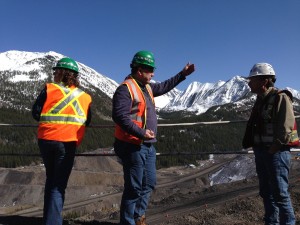 Earlier this week I published an account of my recent trip to the Kootenays where I visited a number of mining operations, and met with people in local communities. Mining is a key economic sector underpinning BC’s economy. The industry directly employs 10,720 British Columbians, contributes $8.5 billion to BC’s GDP and a further $511 million in tax revenues to provincial coffers. Numerous small communities throughout our province depend on mining for their survival.
Earlier this week I published an account of my recent trip to the Kootenays where I visited a number of mining operations, and met with people in local communities. Mining is a key economic sector underpinning BC’s economy. The industry directly employs 10,720 British Columbians, contributes $8.5 billion to BC’s GDP and a further $511 million in tax revenues to provincial coffers. Numerous small communities throughout our province depend on mining for their survival.
While we have much to celebrate about British Columbia’s mining industry, there are also a number of challenges that must be taken seriously. The BC Government has a critical role to play in ensuring that the standards that regulate this industry are kept up to date, and that in addition to the economic benefits mining provides our province, its social and environmental impacts are being accounted for seriously.
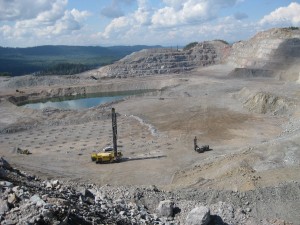 To explore some of the challenges facing this industry – and to highlight some of the solutions that are readily available, I want to turn to two specific and related issues. First, I want to explore how mines manage their tailings ponds. I will specifically look at what we have learned since the Mount Polley tailings pond breach.
To explore some of the challenges facing this industry – and to highlight some of the solutions that are readily available, I want to turn to two specific and related issues. First, I want to explore how mines manage their tailings ponds. I will specifically look at what we have learned since the Mount Polley tailings pond breach.
The second issue I will examine concerns the enforcement and regulatory functions of government and whether adequate funding is being provided by government to ensure that it is managing the environmental and social consequences of mining operations.
Impacts of the Tsilhqot’in decision
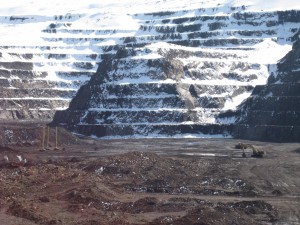 Before diving into these issues, I think it is first important to acknowledge that for the mining industry in BC to continue to succeed, and do so in way that is environmentally and socially responsible, the BC government must ensure it is addressing the requirements placed on it by the Tsilhqot’in decision. We are already seeing examples of how this decision may affect mining investment. It was announced earlier this week that the BC Government bought back 61 coal licences from a mining company in the Northwest of the province, in order to provide a longer window for the BC government to engage in more meaningful government-to-government negotiations with the Tahltan First Nation.
Before diving into these issues, I think it is first important to acknowledge that for the mining industry in BC to continue to succeed, and do so in way that is environmentally and socially responsible, the BC government must ensure it is addressing the requirements placed on it by the Tsilhqot’in decision. We are already seeing examples of how this decision may affect mining investment. It was announced earlier this week that the BC Government bought back 61 coal licences from a mining company in the Northwest of the province, in order to provide a longer window for the BC government to engage in more meaningful government-to-government negotiations with the Tahltan First Nation.
Whether or not this specific policy tool — the re-purchasing of mining licences — becomes commonly used by the BC government, the status quo of mining development is likely to change. The Tsilhqot’in decision made it clear that First Nations have significant say, if not an outright veto, over developments on their land. Last summer the Tsilhqot’in First Nation established new rules for mining development on their titled land. These rules require companies to minimize negative impacts and provide revenue sharing with the community.
Mining companies who wish to develop new mines in British Columbia will need to put an even greater focus on consulting, and ultimately addressing the concerns of not only the BC Government, but First Nations who may have inherent title rights to the land.
Learning from Mount Polley
The mining industry in British Columbia was rocked last summer when the tailings pond at Mount Polley breached its impoundment dam, and released almost 25 million cubic meters of tailings and waste water into the Hazeltine Creek, and down into Quesnel Lake.
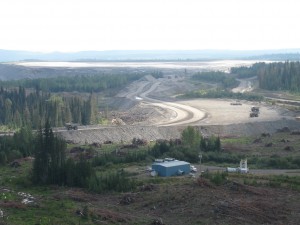 I wrote about this breach when it first happened, and after visiting the mine site and the surrounding communities, I explored in detail what had happened, and what some of the consequences were likely to be. Finally, in January of this year, the Independent Expert Engineering Investigation Review Panel published their report on the Mount Polley Breach. This Panel was empowered to investigate and report on the cause of the failure of the tailings pond facility that occurred on August 4th, 2014 at the Mount Polley Mine. In addition, they were asked to provide recommendations regarding how such an incident could be avoided in the future. It is these recommendations that I will focus on.
I wrote about this breach when it first happened, and after visiting the mine site and the surrounding communities, I explored in detail what had happened, and what some of the consequences were likely to be. Finally, in January of this year, the Independent Expert Engineering Investigation Review Panel published their report on the Mount Polley Breach. This Panel was empowered to investigate and report on the cause of the failure of the tailings pond facility that occurred on August 4th, 2014 at the Mount Polley Mine. In addition, they were asked to provide recommendations regarding how such an incident could be avoided in the future. It is these recommendations that I will focus on.
The Mount Polley tailings pond breach has shattered public confidence in government and industry ability to adequately protect the natural environment during mining operations. Regaining public trust and confidence is perhaps the greatest challenge facing the mining industry. First Nations, the Alaskan Government and Environmental groups have all raised similar concerns. How industry and government collectively respond to the Mount Polley breach will be critical in rebuilding this trust. And an ongoing examination of how mines are managing their tailings and waste, as well as a determination as to whether or not these reflect best practices, will almost certainly be one of key elements of moderating the concerns of British Columbians.
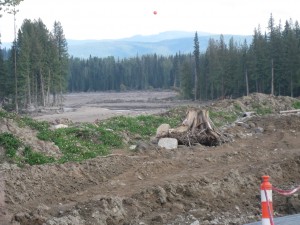 The Expert review panel touched on this point at the start of Section 9 of their report. Section 9 – entitled “Where Do We Go From Here” – explored how the BC mining industry can use best practices and best available technologies (BAT) to reduce failure rates to zero.
The Expert review panel touched on this point at the start of Section 9 of their report. Section 9 – entitled “Where Do We Go From Here” – explored how the BC mining industry can use best practices and best available technologies (BAT) to reduce failure rates to zero.
In the introduction to this section, the Panel rejected the concept of a “tolerable failure rate for tailings dams”, citing concerns that this would institutionalize failure. To quote from their report: “First Nations will not accept this, the public will not permit it, government will not allow it, and the mining industry will not survive it”.
A similar concern was voiced this week by Alaskan government, industry leaders and First Nations, who were in Victoria to meet with Minister’s regarding their concerns about the scale of development taking place in the British Columbia.
The tailings breach at Mount Polley was cited as having raised concerns about the potential impacts on the fishing industry in the region. The Alaskan delegation also felt that the review process in British Columbia was inadequate and not placing enough focus on potential cumulative impacts.
Interestingly both the Expert Review Panel and the group from Alaska pointed to the need to change the way that tailings are managed in this province.
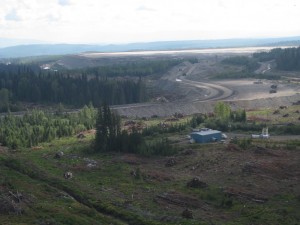 The panel established three conditions that addressed the instability that is created when mines use dual-purpose impoundments, storing both water and tailings. Best available technology would dictate that where possible these two waste products need to be stored in separate facilities that are specifically designed to prevent tailings releases. Critically, this panel also noted that economic considerations cannot be allowed to be the dominant factor in determining what is feasible – the costs of another accident far outweigh the implementation of best practices and technology.
The panel established three conditions that addressed the instability that is created when mines use dual-purpose impoundments, storing both water and tailings. Best available technology would dictate that where possible these two waste products need to be stored in separate facilities that are specifically designed to prevent tailings releases. Critically, this panel also noted that economic considerations cannot be allowed to be the dominant factor in determining what is feasible – the costs of another accident far outweigh the implementation of best practices and technology.
Following the establishment of the Best-Available-Technology (BAT), the Expert Panel made the following recommendations:
- “For existing tailings impoundments: Constructing filtered tailings facilities on existing conventional impoundments poses several technical hurdles. Chief among them is undrained shear failure in the underlying saturated tailings, similar to what caused the Mount Polley incident. Attempting to retrofit existing conventional tailings impoundments is therefore not recommended, with reliance instead on best practices during their remaining active life.
- For new tailings facilities: BAT should be actively encouraged for new tailings facilities at existing and proposed mines. Safety attributes should be evaluated separately from economic considerations, and cost should not be the determining factor.
- For closure: BAT principles should be applied to closure of active impoundments so that they are progressively removed from the inventory by attrition. Where applicable, alternatives to water covers should be aggressively pursued.”
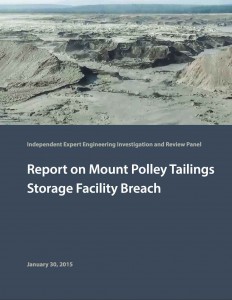 The BC Government has been somewhat responsive to this report. In mid-March they announced new interim rules for tailings ponds which would require companies seeking to build a mine in BC to include the best-available technologies for tailings facilities in their application. The Ministry of Mines are currently completing a review of mining regulations that will eventually establish the new way of doing business in BC.
The BC Government has been somewhat responsive to this report. In mid-March they announced new interim rules for tailings ponds which would require companies seeking to build a mine in BC to include the best-available technologies for tailings facilities in their application. The Ministry of Mines are currently completing a review of mining regulations that will eventually establish the new way of doing business in BC.
However in response to calls from Canadian and American groups to end the use of water based storage facilities, the Minister of Energy and Mines suggested that the expert panel’s bottom line is about reducing water storage of mine waste where you can, and reducing the risk by increasing safety factors. This statement, I fear, betrays a lack of commitment to the true underlying issue highlighted in the report – that the status quo cannot continue and that we must throw out any notion of acceptable risks. I share the frustrations of these groups that we have failed to see an open and transparent commitment to the recommendations of the Expert Report.
This process cannot be taken lightly by government. The Mount Polley breach was devastating to the community of Likely, and even today uncertainty exists as to the full extent of the environmental, social and economic costs that are faced by residents. Evidence of this uncertainty can be found in a recently research paper in Geophysical Research Letters that points to the possibility of ongoing and long-term environmental impacts from the spill on aquatic life. At the very least, long term monitoring of water and sediments in Quesnel Lake will be important.
The solutions are there — they are contained in the path forward highlighted by the Expert Panel. British Columbians deserve government to ensure that it establishes a truly credible mining regime in British Columbia, one which commands the confidence of all those who would feel its impacts. It is only under such a regime, where companies are responsible for the environmental and social impacts of their developments, that mining can be truly successful in our province.
This brings us to the second related issue facing this industry – Government’s ability to regulate and enforce the standards they set for the industry.
Professional Reliance
In 2001 after the BC Liberals were elected to their first term, they began a comprehensive core review to cut the size of government. Premier Campbell asked all government departments to prepare scenarios as to what it would look like with 20%, 35% and 50% cuts to spending. As a direct consequence of government downsizing, technical expertise within the civil service became a casualty. Instead of having technical expertise in house, the government moved towards wide scale use of Professional Reliance in the permitting process. Under the Professional Reliance approach, the Ministry relies on the judgment and expertise of qualified experts hired by a project proponent.
What is particularly important to note is that in March 2014, the Office of the British Columbia Ombudsperson released a scathing report criticizing the Professional Reliance model with respect to streamside protection and enhancement areas. The report, entitled The Challenges of Using a Professional Reliance in Environmental Protection – British Columbia’s Riparian Areas Regulation made 25 recommendations, 24 of which the government agreed to accept.
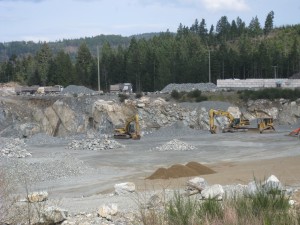 My own personal view is that the government’s approach to follow the Professional Reliance model is fraught with difficulties. The role of the government is to protect the public interest. When government is making decisions solely based on a project proponent’s expert opinion, it is very troubling. Imagine a judge in a court of law only listening to the expert opinion on one side of a case (plaintiff or defendant) and not allowing expert opinion to be submitted from the opposing side.
My own personal view is that the government’s approach to follow the Professional Reliance model is fraught with difficulties. The role of the government is to protect the public interest. When government is making decisions solely based on a project proponent’s expert opinion, it is very troubling. Imagine a judge in a court of law only listening to the expert opinion on one side of a case (plaintiff or defendant) and not allowing expert opinion to be submitted from the opposing side.
There is no doubt that mining plays a very important role in our economy. Mining provides us with the basic elements with which we have built British Colombia into a prosperous and successful jurisdiction. However, the mining industries’ importance to our economy does not disconnect it from its responsibility to conduct itself in a way the is both environmentally and socially responsible. The Expert Review panels report made it clear that the status quo is no longer acceptable and that change is needed. However, for industry to embrace this change, the BC government needs to step up to the plate. The lack of funding for the compliance and enforcement sections of our resource and environment ministries is putting us at risk of another accident. Furthermore, if we expect the mining industry to take the Expert Review panel’s recommendations seriously, we also need to be convinced that government takes them seriously as well.
Soils in the Shawnigan Lake Watershed — Some Questions
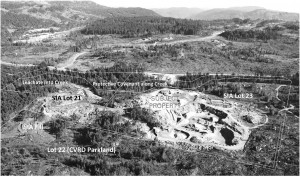 Earlier this month I wrote a piece on the wisdom of dumping contaminated soils in the Shawnigan Lake watershed. I visited the region with Shawnigan Lake Area Director Sonia Furstenau. Together with a few other Shawnigan Lake residents, we hiked around on parkland owned by the Cowichan Valley Regional District. I took this opportunity to take a number of photographs. More importantly, I took the opportunity to collect water samples.
Earlier this month I wrote a piece on the wisdom of dumping contaminated soils in the Shawnigan Lake watershed. I visited the region with Shawnigan Lake Area Director Sonia Furstenau. Together with a few other Shawnigan Lake residents, we hiked around on parkland owned by the Cowichan Valley Regional District. I took this opportunity to take a number of photographs. More importantly, I took the opportunity to collect water samples.
The results of these water samples, together with my observation that a significant amount of fill had over run Lot 21 and was on the neighbouring parkland, led me to ask the Minister of Energy and Mines and the Minister of Environment questions in Question Period today.
Below are the questions and the Ministers’ responses. I gave the Ministers my questions in advance as I wanted to give them time to check with staff prior to providing answers. The answers I received in my view are very helpful in providing information to the CVRD as to how they might proceed.
Question
A. Weaver: I have in my possession two letters [here and here] sent from the Ministry of Energy and Mines to South Island Aggregates in Shawnigan Lake concerning “sloughing or material that encroached onto Cowichan Valley regional district property.”
The April 1, 2014 letter from the ministry’s regional manager for the coast area states that “the property impacted by the encroachment must be cleaned up and returned to its pre-encroachment state to the satisfaction of the property owner.”
The story continues. I also have a letter from the CVRD clearly outlining the fact that the property impacted has yet to be cleaned up, let alone to the CVRD’s satisfaction. South Island Aggregates needs an amendment to its mines permit before its Ministry of Environment permit can become active.
Will the Minister of Energy and Mines commit to ensuring that before an amended permit is issued, the infractions and issues of non-compliance at this site have been addressed?
Answer
Hon. B. Bennett: It’s actually refreshing to get a question where the member has a good grasp of the facts. I don’t think that this quarry is in the member’s riding so, honestly, he deserves a lot of credit for having done the due diligence that whoever the MLA is for that area hasn’t done.
To the member’s question, he is correct that there was a commitment made by the Ministry of Energy and Mines that we would ensure that the company that had encroached on regional district land would, in fact, remediate that land. An engineering plan has gone to the regional district, about eight weeks ago.
I don’t know why we haven’t heard back from the regional district, but I will commit to work with the member, work with our ministry, work with the regional district and make sure that they know they have that plan. They can take some time to look at that plan, and that RD land will be remediated.
Supplementary Question
A. Weaver: Thank you to the minister for the answer.
For several years soil has been dumped in lot 21 for later use as backfill for the neighbouring quarry in lot 23, which we just discussed, where the amended permit is required. I recently visited the location. I collected and subsequently analyzed water samples and noted that runoff from this site entering Shawnigan Creek had extremely high iron levels that failed drinking water standards locally.
The Cowichan Valley regional district is very concerned about the long-term safety of drinking water in the Shawnigan Lake area. They want to conduct an independent environmental investigation of lots 21 and 23 and are willing to pay the costs of doing so themselves. There will be no expense to the government.
My question to the Minister of Environment is this. Does the CVRD require a contractual agreement with the ministry to allow them to conduct such an investigation? If so, will the ministry consider entering into such an agreement? If not, is it the minister’s understanding that the CVRD have full authority to conduct such an independent environmental investigation on lots 21 and 23?
Answer
Hon. M. Polak: Thank you to the member for providing some details ahead of time. That enabled me to pursue and seek some advice with respect to jurisdictional issues around environmental testing.
Here’s what I can tell the member. With respect to lot 21, it is private property. Now, that means for the Ministry of Environment that we have full authority to be able to enter that property, conduct testing, investigate if there are concerns with respect to pollution. We intend to do so. We have done so, and I will talk a little bit more about that in a moment.
There is, however, though, no authority — the minister possesses no authority — to be able to allow another party, even through a contractual arrangement, to engage in that kind of investigation on private land. Here’s what we can do, though. Staff, after meeting with representatives from CVRD have developed a sampling plan for the site. I understand they will be discussing that with CVRD today.
We cannot order the private property owner to allow CVRD members to attend and observe. However, we will be discussing that with them, and we’re hopeful that on a voluntarily basis the landowner will allow us to bring along CVRD representatives to observe the testing. In the absence of that we will certainly make sure that all test results, all test processes are discussed and shared with the CVRD.

